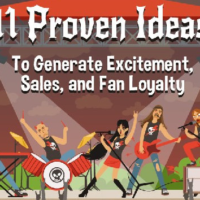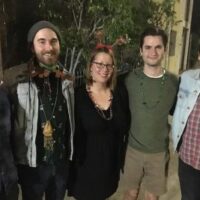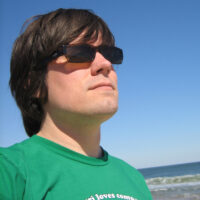What You Need To Know About Music Photography
Jason Gardner is a professional photographer who primarily shoots musicians. He has photographed artists like Manu Chao, Gogol Bordello and Antibalas and captured live performances by Bob Dylan, Dave Matthews, Willie Nelson and Neil Young. His photos have appeared in periodicals like Rolling Stone, Spin, New York Magazine and Time Out among many others.
Ever since someone forwarded me a link from Rock and Roll Confidential’s Hall of Douchebags that features some of the most uninspired band photos ever I knew I had to locate a music photographer to discuss how the pros do it. Please note that no band or photographer mentioned or with a photo credit here has anything to do with such douchebaggery.
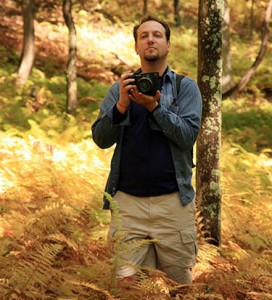
Jason Gardner (photo by Mitch Bernstein)
MC:
Jason, thanks for taking the time to speak to me today. I guess to start off, tell me what musicians should do to prepare for a photo shoot?
JG:
The biggest prep work is helping the photographer pre visualize or at least sharing with the photographer what they think are “good photos.” A typical conversation I have is a musician or a band says, “I’m ready for a photo shoot.” And I say, “Great. Which types of photos would you like?” And they say, “I don’t know. Kickass ones,” or “cool ones” or “hip ones.” And I say, “Okay, I get that. But photos are somewhat subjective, and there’s a difference between what you think is hip and what I think is hip, or what your neighbor thinks is hip and you think is hip.” A lot of the work I do before actually showing up on the day of the shoot is pre-production and planning. That’s split up into three areas: creative visualization, scouting and props/wardrobe/other planning for the actual items of the shoot. The pre-visualization part is the most homework a band can do before coming to me.
MC:
What does pre-visualization entail?
JG:
The conversation usually continues on that same track. I will ask things like, “Do you want to shoot inside or outside? Do you want gritty or clean?” I try to make sure we’re speaking the same language. Often I’ve found musicians are geniuses aurally, but are not used to thinking in visual terms. What it usually comes down to is asking them, “Which photos do you like? Which photos have you seen in the last few weeks or months that somehow resonate with you, not necessarily limited to portraits.” I ask them what they have seen in going online and looking at websites or other bands or random photos and portraits. I ask what has caught their eye and why. That helps me to understand their visual vocabulary. So, if I had my druthers, going back to your question, they would come to me saying, “We want to do photos with you. We have these 5-10 photos that we really love, but we’re not sure why or we have different reasons why, but we want to keep those in mind when we’re planning our shoot.”
I’ll give you a very specific example: I worked with this group called the Chris Bergson band. They are cool guys who do blues and roots music. Chris said, “I just want groovy photos. I don’t know what I want.” So, I said, “Okay, send me some photos that you like.” And he said, “I don’t know any photos I like.” So I thought, “Let’s go back to our common language” and said, “Send me five album covers you like.” He sent them to me right away because he knew. One of them was that classic shot of The Band from the 70s, with them looking up and the river in the background.
The point is that this image tells me he likes black and white, that he likes stuff that was straight up and not super conceptual. So I said, “Send me a couple mp3s of your music so I can hear what you play.” And it was kind of bluesy and rootsy. One of the tracks was titled “In Gowanus.” And of course Gowanus is a really industrial area in Brooklyn. It happened that at the time he lived in upper Park Slope, so it was in between the neighborhood where he lived and where I lived. And I asked him, “Why don’t we do the shoot in Gowanus?” It has this edgy, urban background with a lot of graffiti and old water towers.
He said, “Okay,” but I knew that every time you shoot more than one or two people, especially musicians, you really have to know your where you are going. I jumped on my bike, met him, and we did some location scouting. I had my camera, and we just biked around and went to some places I knew and some other places and shot about 15-20 locations in about an hour and a half or two hours. What we did was edited from there and sent over to his manager. That was huge, because he and his manager were able to pre-approve a few locations. That’s the second part of the process I mentioned: scouting. For the third part, he asked “ What should I wear?” And I said, “Wear whatever you like, whatever you’re comfortable with, whatever you want the image to be.” And he wasn’t sure, so I said, “Why don’t you wear whatever you’d wear for a gig.” And that’s common sense. You don’t want an artist to wear a clown suit unless that is what they wear on stage or in real life. We had our four or five locations set before the shoot started and you have to plan ahead like this because as I mentioned, herding musicians is a little like herding cats. You have to know where you’re going. One of the photos of this shoot got into Mojo Magazine.
MC:
Here’s a question for you: I am awful at taking pictures because I never know what to do with my face or my eyes. Can you advise someone on how to take better photos? Is there something to being a good subject?
JG:
That’s a good question. Part of it is in the pre-visualization/collaboration. It’s talking about what image you want to portray. I shot this guy recently, who is starting a punk music label. He never smiles, and we knew that was happening. He was scowling and fist clenching. That’s kind of an extreme. It depends on the image you want to portray. You don’t want to be too smiley/goofy when the desired result is a somewhat serious/cool/groovy/kickass photo. What I like to do is provide musicians with a whole different bunch of looks. Let’s say we’re doing five locations and three wardrobes. All the sub-categories within those. Some they are looking at the camera, some they are looking away, some they are looking at each other. Some they are with their instruments, and some without. Some are more contemplative, and some aren’t.
I don’t think musicians need to put a lot of pressure on themselves to be a good subject. I think part of that is the photographer’s burden/job. But part of it is keeping your mind and heart open to the photographer’s suggestions. A portrait is like a conversation, and not just a one-way conversation. A one-way conversation would be the subject saying, “This is what I have to say, and it’s here.” A two-way conversation would be the photographer judiciously and subtly art directing them and moving them here, to and fro or adjusting the group dynamic. And let me as a tangent say, group music photography is another beast all together, because once you have more than two people it gets to be a group and a lot more challenging. There’s getting everyone’s eyes open at the same time and things like doing it at nine in the morning when some might be hung over and maybe not too happy to be there. The one-way/two-way conversation is where the photographer should be putting something into the conversation, whether it be directing them or just connecting with them and their type of music so they don’t feel like they’re on a photo shoot. One of the things I say to my subjects is, “My style is I shoot a lot. You may think, ‘He has to have it by now,’ but I tend to shoot a lot, and it’s more work for me to get the best photo because I’m editing them myself.” But I tell them, “In the end, you’re going to end up with only nine or ten good ones, and you’re going to have to pick three or four shots from that group.” That usually helps them to relax a lot. It’s not we’re only taking twelve photos, and they all have to be great.
MC:
What advice would you give someone when selecting a photographer?
JG:
As I said before, musicians may or may not be the most visual people in the world, but I think they have some visual skills. The first thing to do is look at the work. Look at the photos they choose to display on their site. You want to see a couple things, and if you can determine it from the photos, great. If not, that’s fine too. Do they specialize in outdoor/exotic locations, or is it all studio? That’s the big thing with music and photographers in general and speaks to what kind of work you want to produce for yourself too. Maybe I’m stating the obvious, but the outdoor work tends to be a little bit more visually interesting than just a blank wall. It tends to be less artificially lit. Studios inside could be five lights, and this could just be one light. Part of that is a little soul searching as to what kind of vibe you think you and your band mates would react to more. Some bands love to go into the studio with six lights because they feel like rock stars. And some have had so much of that they want to go to a random corner in remote Brooklyn where no one knows them and they can run around naked.
MC:
If you can’t afford a photographer, are there some simple things you can advise people about their photographs? When you look at a crappy, amateurish photo, are there a handful of things you can steer people away from doing?
JG:
One thing I would say would be regarding your wardrobe. Unless your persona onstage is to wear crazy costumes or you are like KISS with full-on makeup, I would say for musicians it depends, but the photo should be about you and not what you’re wearing. What you’re wearing should not call the attention away from your face, instrument, facial expressions, mohawk, whatever. I’d say wearing plaids and polka dots and major patterns is more distracting than solid colored clothes. Of course someone like Eugene from Gogol Bordello would be a different story, because he is all about that kind of craziness.
In general, the musicians I’ve shot, when they ask me that it makes sense. The wardrobe shouldn’t be the major event. I also would recommend against wearing all white, especially if you’re dark skinned, because white blows out a little bit in digital. Solid colors, light or dark, are usually the best. I’d say if you’re doing a shoot yourself, ask a friend or a girlfriend or boyfriend to do your hair and make-up instead of doing it yourself. It is also always good to have someone else besides the photographer on the set, looking for that random stray hair or random things in the background. Also if you’re shooting on the street, you want to make sure you don’t get hit by a truck. One of the other things is, if you’re shooting with more than two people in a public space in New York City, you have to get a permit from the mayor’s office. It’s free if you’re not doing a major production where you have to shut down traffic. It’s basically that within 24-48 hours before the shoot you have to get a permit. Go Google “TV and photo work permit,” and it’s a one-page form that you print and fax back. If it’s one person shooting one person, fine, but cops are pretty good at telling a professional shoot vs. a non-professional shoot.
For example, I did a shoot with Antibalas (Editor’s Note: Antibalas is a very large Afrobeat group.) that for sure needed to get permitted, because they were playing, and I had an assistant and lights and their manager and other people on the shoot, and within five minutes, the police were there. (Editor’s Note: Jason had all the right permits so this was not an issue.)
We went through the process of pre-visualization and scouting and decided to pick a place in Madison Square Park. We went, and I made some creative consultation ideas and said, “Hey, I’ve got these five or ten ideas, what do you think?” And Antibalas is tricky to shoot, not just because they are a big band, but because they are a collective and all come from different places, so they are only in one place at one time before a big show from about 9 a.m. to 11 a.m.
MC:
I know. They are like a baseball team. It’s amazing.
JG:
It was supposed to rain that day, so I only had about 45 minutes anyway. What I decided to do was a shot in front of the Flatiron first, but then get them together and have them start playing, because it would warm them up and make them not think about the shoot and get them going. The few members that were not so used to being “on” at 9 a.m. were dragged out of the element of a photo shoot. And as they were playing, they started dancing and one of them jumped, and that was one of the shots.
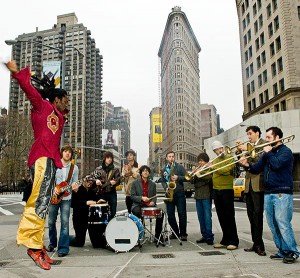
Antibalas – Photo by Jason Gardner
Then our next location was in front of this court building, for the cover of this world music magazine Global Rhythm, now defunct. It was across from Madison Square Park, because one of the big tracks on that album featured a lyric “order in the court!” So, we had the backdrop of the court building and there’s a connection.
As we were walking over, they were walking naturally in a v formation. So I ran backwards while they were walking, and I shot a few and they were a little self-conscious. But then Amayo (lead singer of Antibalas) was in front and just opened his arms in a way that he was leading his flock, and that was the shot Time Out used.
I guess it says that sometimes the best shots are the spontaneous moments in between, and photographers should be ready for that. It loops a little bit back to what you asked me when you asked about musicians evaluating photographers. If they want portraits that are unscripted, they should see if the photographer does any journalism work and can think on his/her feet. Because studio work can be like a product shoot – very still life.
For more on Jason and his work please visit his website – jasongardner.net
Big thank yous to Antibalas and The Chris Bergson Band – please check them out as well.


